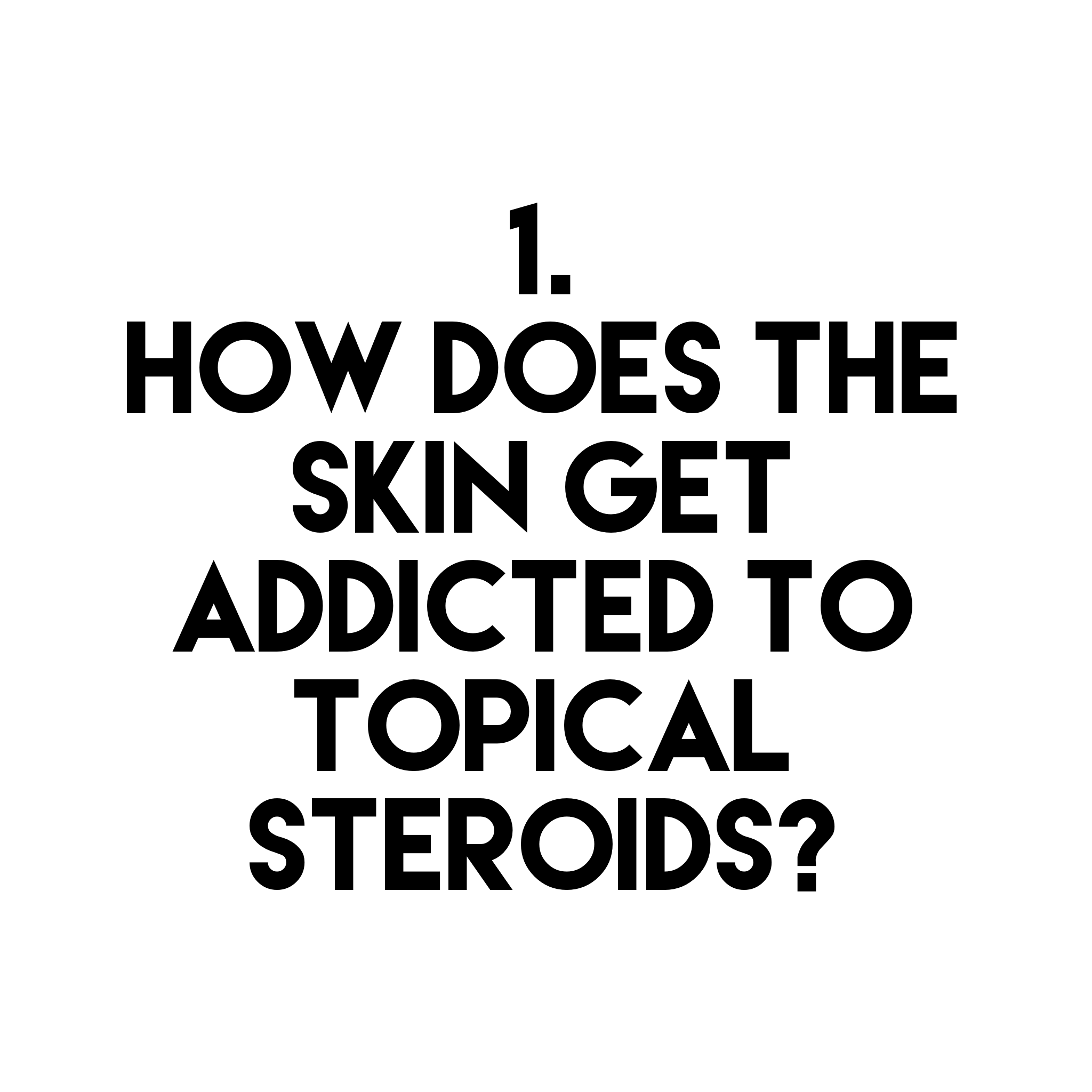Topical Steroid Addiction
How does the skin get addicted to Topical Steroids?
Who develops Topical Steroid Addiction?
Anyone using topical steroids on their skin for prolonged periods of time, knowingly or unknowingly, can develop Topical Steroid Addiction. Most of the time, Topical Steroids are prescribed for skin conditions such as Eczema, Psoriasis, Fungal Infections etc. However, people with no prior skin condition can also develop Topical Steroid Addiction, for example people who use white lightening/whitening creams which contain steroids for the bleaching effect.
TSA can also develop from indirect contact with TS on the skin. For example if you applied TS for another person regularly and did not wear gloves or wash your hands afterwards, you can develop TSA. You can also develop TSA on areas of the skin that you do not proactively apply TS on. This happens when remaining TS cream on your hands/fingers transfer to other parts of your skin when you touch it. Applying moisturisers over areas where TS is applied can also spread the TS over a wider area.
It is however also important to note that not all people who use topical steroids for a long period of time will develop TSA. The exact reason why some develop it and some do not is yet to be uncovered. It is in general good to be aware when using topical steroids that TSA is a possibility.
What do steroids do to our skin cells?
Before we can understand the effects of steroids on our skin, we have to understand the skin’s natural immune reaction. Whenever the skin detects an irritant or allergen on its surface (e.g. detergent, dust, fungi, bacteria etc), the skin’s immune reaction is triggered to fight them. The skin’s first response is presented as inflammation (redness, swelling, heat), this is when healing cells are called to the site to fight. The next response is proliferation/regeneration (flaking, itching), where the skin is produces flakes to cover the wound. The skin is defending itself from what it identifies as a threat and this reaction can be uncomfortable to the sufferer.
The only way to prevent this reaction is to find out the trigger and eliminate it. It could be anything that your skin comes into contact with. Because it is often difficult and tricky to find out the allergen/irritant, steroids provide a quick and easy “fix” by suppressing this reaction so that your skin does not fight. Hence no inflammation, flaking or itch will happen. After prolonged use, the skin cells become weak. They are no longer used to performing their function, and they do not regenerate as quickly as normal skin cells. The skin cells have become immunomodulated by the topical steroids.
Steroids have several effects on our skin. The 3 effects that are relevant to Topical Steroid Addiction are:
1. They suppress the skin’s natural immune function
2. They suppress our skin cell proliferation (regeneration) rate
3. The poor proliferation rate contributes to skin thinning
As a result of the 3 effects above,
1. The skin becomes ultra-sensitive
2. The skin’s healing rate is very slow
As the skin has become thinner than healthy skin, the skin fights any allergens/irritants with a stronger reaction than normal as the threat is perceived to be closer to the body. The skin starts to flake a lot in an attempt to regenerate and heal itself. This is not a bad thing. The skin is doing its best to recover, and this process, while painful and frustrating, is you being on the road to recovery.
I hope that this information was helpful to you in understanding how your skin is affected by topical steroids and why it is behaving the way it is. Your body is healing, give it lots of love and patience. Recovery and growth is always painful. Know that there will always be something good at the end of it all, and this will not be for nothing.
